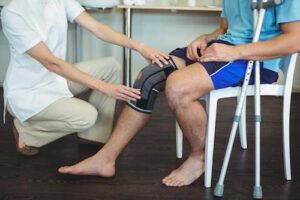In this post, we will explore the significance of staying on top of neck and back pain and why it should be something you keep on top of.
1. The Effects of Prolonged Desk Work or Physical Labor:
Sedentary desk jobs and physically demanding work both contribute to increased stress and strain on the neck and back. Office workers often experience poor posture, prolonged sitting, and repetitive movements, while laborers may engage in heavy lifting, awkward positions, and repetitive motions. Over time, these factors can lead to muscular imbalances, postural issues, and increased risk of injury.
2. Impact on Daily Life and Productivity:
Neck and back pain can significantly affect one’s quality of life and work productivity. The discomfort and restricted mobility can make simple tasks challenging, impair concentration, and diminish overall performance. By addressing and managing neck and back pain, individuals can regain their vitality, improve focus, and maintain productivity in their respective roles.
3. Prevention of Chronic Pain and Long-Term Issues:
Neglecting neck and back pain can result in chronic conditions and long-term consequences. Untreated pain may develop into conditions such as cervical spondylosis, herniated discs, or chronic muscle tension. By staying proactive and addressing discomfort early on, individuals can prevent the progression of these conditions and minimize the risk of chronic pain.
4. Promoting Proper Posture and Ergonomics:
Maintaining good posture and practicing ergonomic principles are key to preventing and managing neck and back pain. Office workers can benefit from proper desk setup, ergonomic chairs, regular breaks, and exercises to stretch and strengthen the neck and back muscles. Laborers can focus on correct lifting techniques, using appropriate equipment, and incorporating targeted exercises into their routine.
5. Seek Professional Guidance and Treatment:
For effective management of neck and back pain, it is essential to consult a qualified physiotherapist. These professionals can assess your specific condition, provide tailored exercises, manual therapy, and other modalities to alleviate pain, restore mobility, and prevent future issues. They can also offer ergonomic advice and guide you in optimizing your work environment for better postural support.
As an office worker or laborer, investing in your neck and back health is paramount. By staying proactive and addressing pain early on, you can prevent long-term complications, maintain productivity, and enhance your overall well-being. Prioritize regular breaks, exercise, proper posture, and ergonomic principles in your daily routine. Remember, seeking guidance from a qualified physiotherapist is crucial for effective management of neck and back pain. Take charge of your health, and enjoy a pain-free and productive life!
If you are experiencing neck and back pain, reach out to our experienced physiotherapy team for a comprehensive assessment and personalized treatment plan. Let us help you overcome pain, regain mobility, and thrive in your professional and personal life.
Remember, taking care of your neck and back today ensures a healthier and pain-free future. Start your journey to optimal well-being now!





